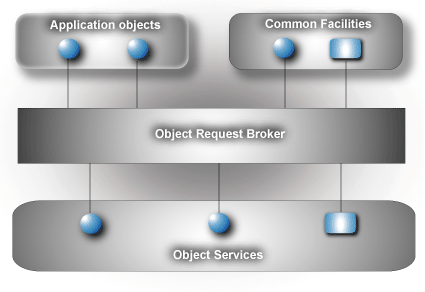A Brief Introduction to CORBA
The actual CORBA specification is controlled by the Object Management Group( OMG) which is an open consortium of more than 700 companies that work together to define open standards for object computing. CORBA objects can be written in any programming language supported by a CORBA software manufacturer such as C, C++, Java, Ada or Smalltalk.
CORBA
- the world's leading middleware solution that enabling the exchange of information, independent of hardware platforms, programming languages and operating system.
- essentially a design specification for an Object Request Broker (ORB) ; where an ORB provides the mechanism required for distributed objects to communicate with one another, whether locally or on remote devices, written in different languages or at different locations on a network.
- CORBA is often described as a " software bus " because it is a software-based communications interface through which objects are located and accessed. The illustration below identifies the primary components seen within a CORBA implementation.

CORBA Architecture
The major components that make up the CORBA architecture include the :
- IDL which is how CORBA interfaces are defined
- ORB which responsible for all interactions between remote objects and the application that use them
- POA ( Portable Object Adaptor), which responsible for object activation/deactivation,mapping object to actual object implementations.
- Naming Service, a standard service in CORBA that lets remote clients find objects on the network
- Inter-ORB Protocol (IIOP) which is based on the standard TCP/IP internet protocol and works across the internet ; IIOP transmits object requests between various ORBs running on the network.
No comments:
Post a Comment